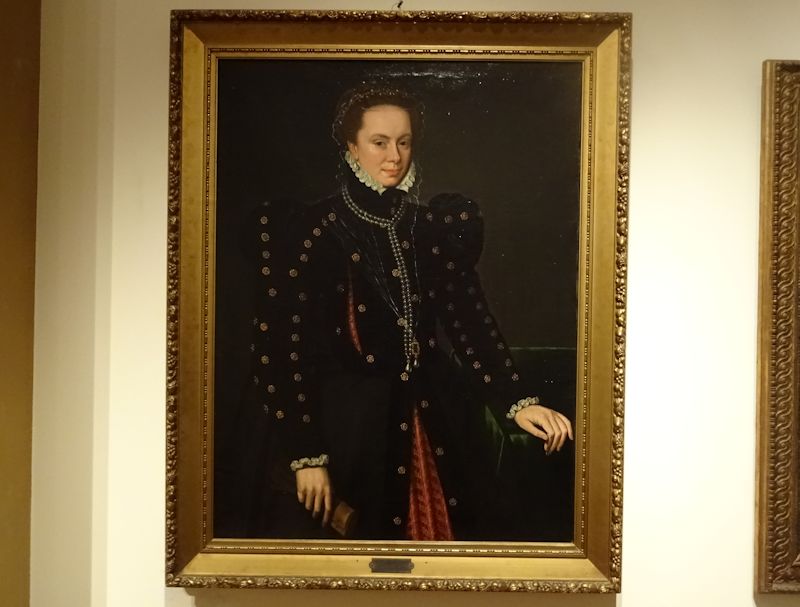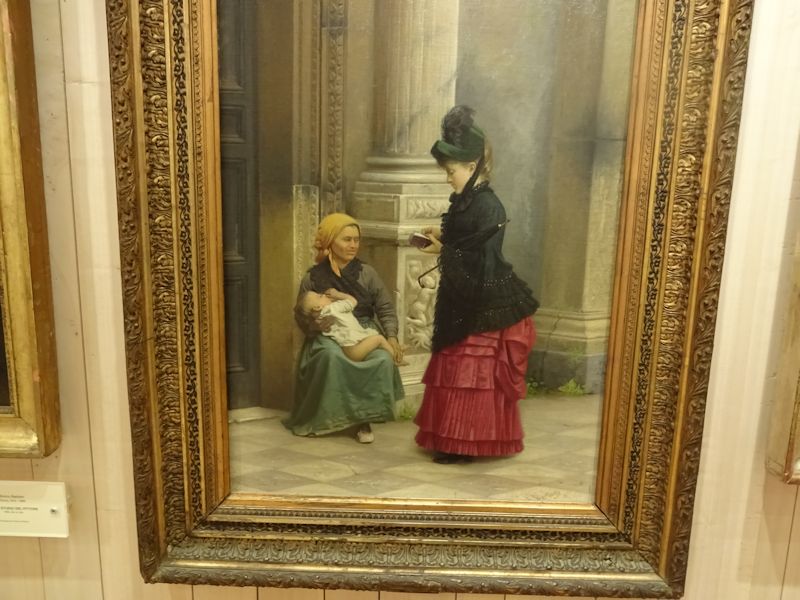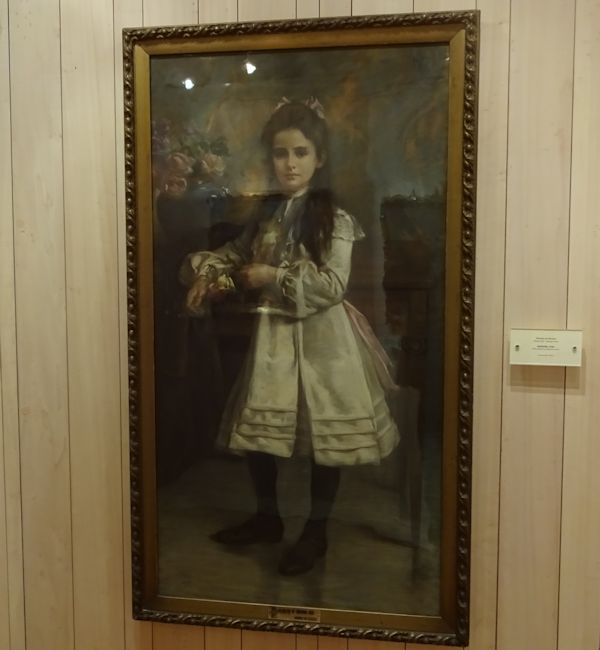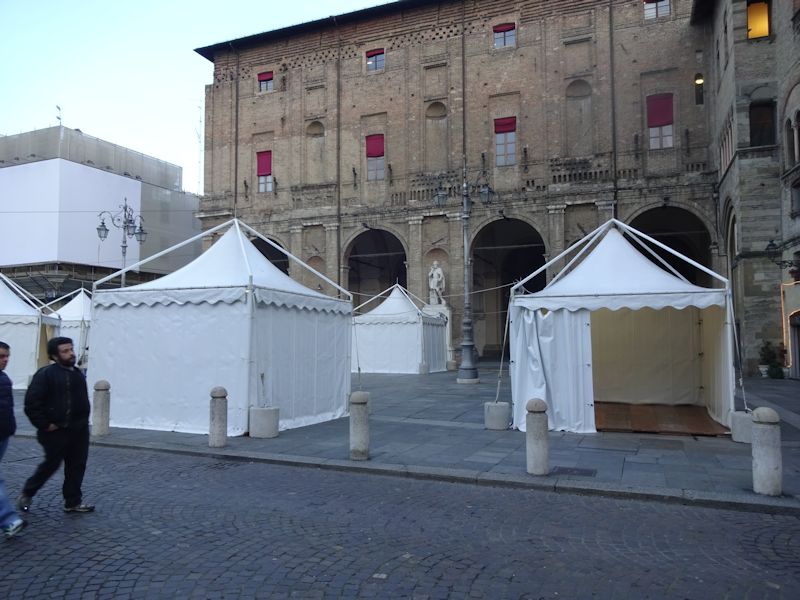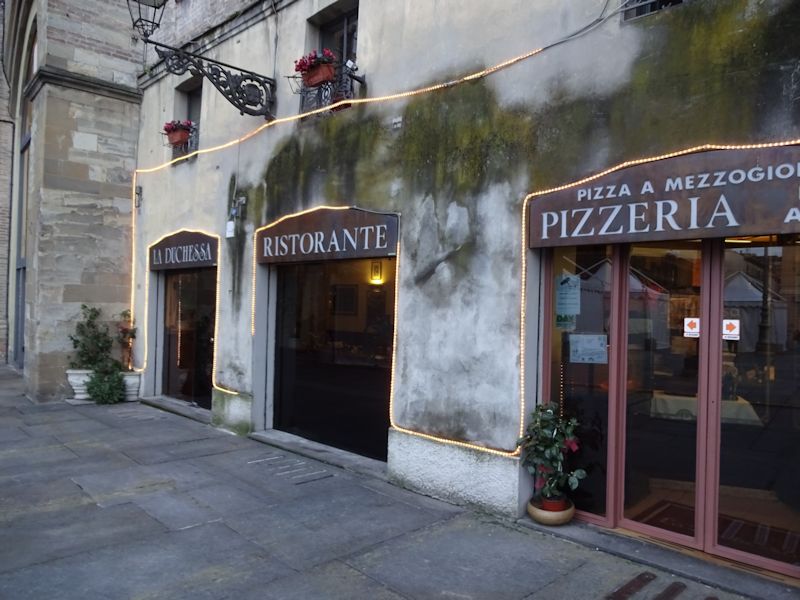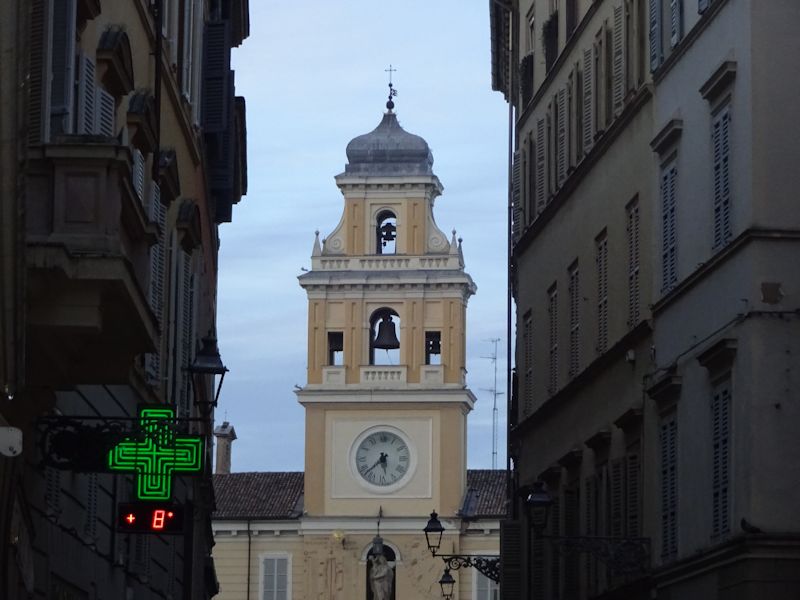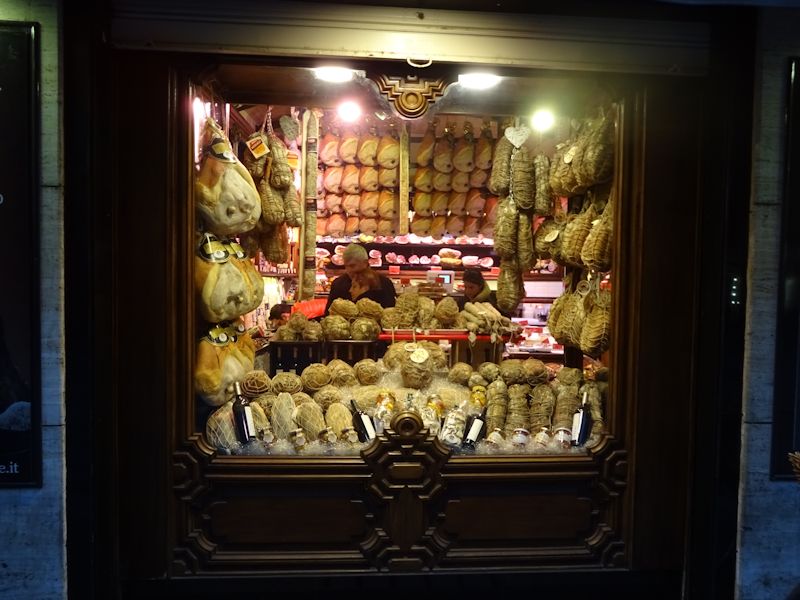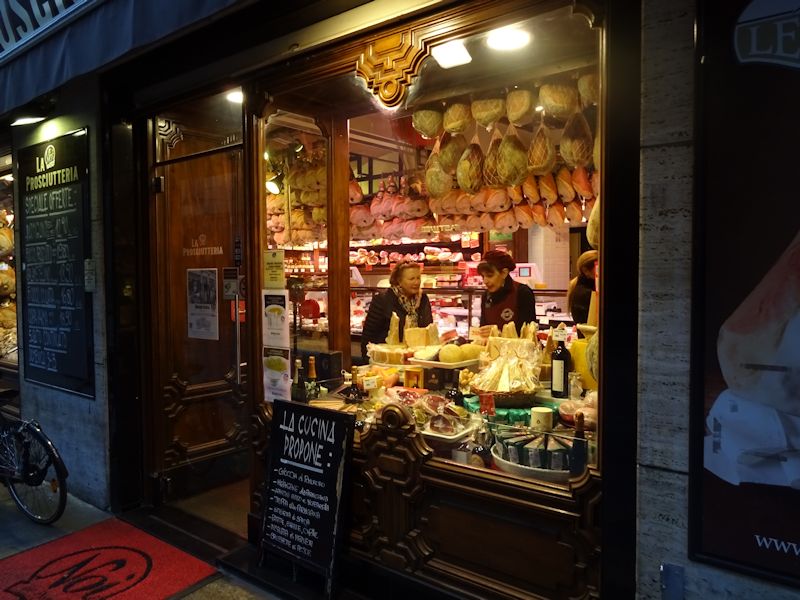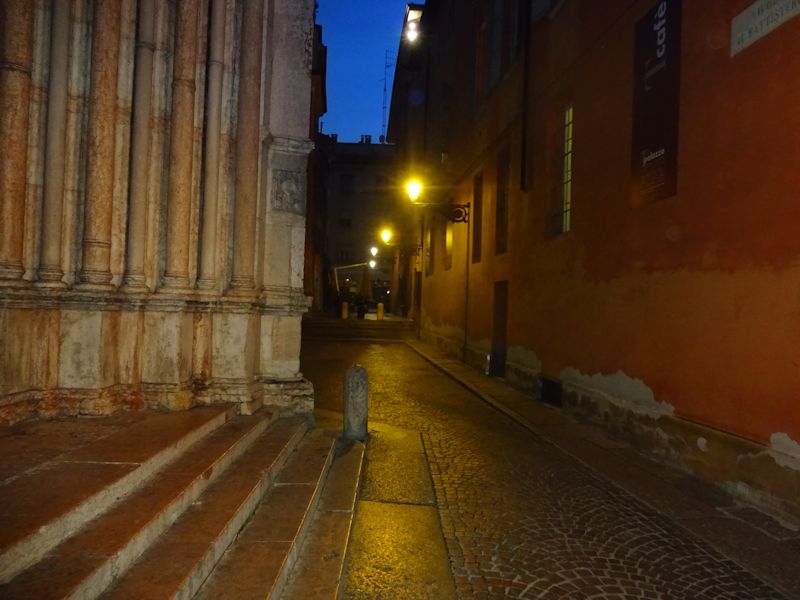You may not find this terribly rewarding unless you're included here, so this is a good time for casual and random browsers to turn back before they get too caught up in the sweep and majesty of the proceedings and can't let go.
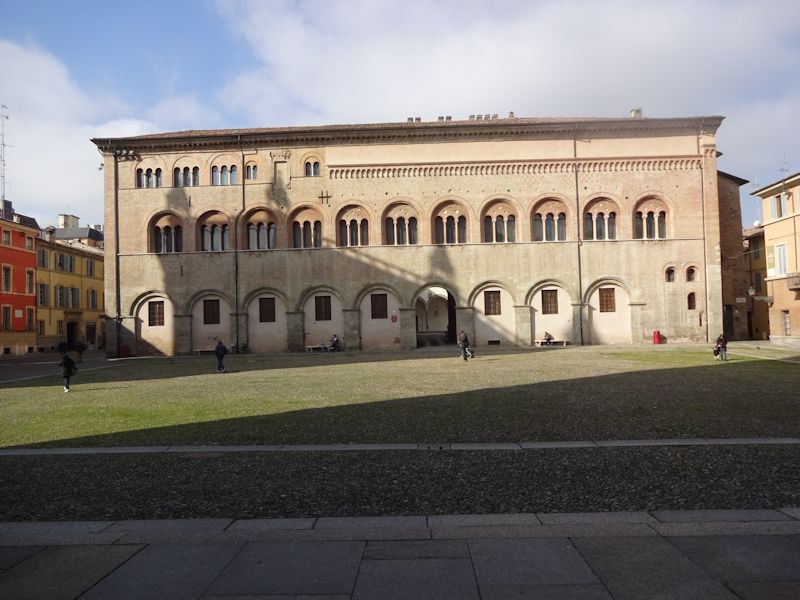
The Palazzo del Vescovo or Bishop's Palace -- the Diocesan Museum's included in the Baptistery ticket fee, so why not? We've been assured that it's not just the usual binful of chasubles, mitres, and crosiers. The building was begun in about 1055, originally rather like a fortress, with continuous modifications over the centuries; the present aspect of the thing reflects the restorations of the façade carried out in the 1920s.
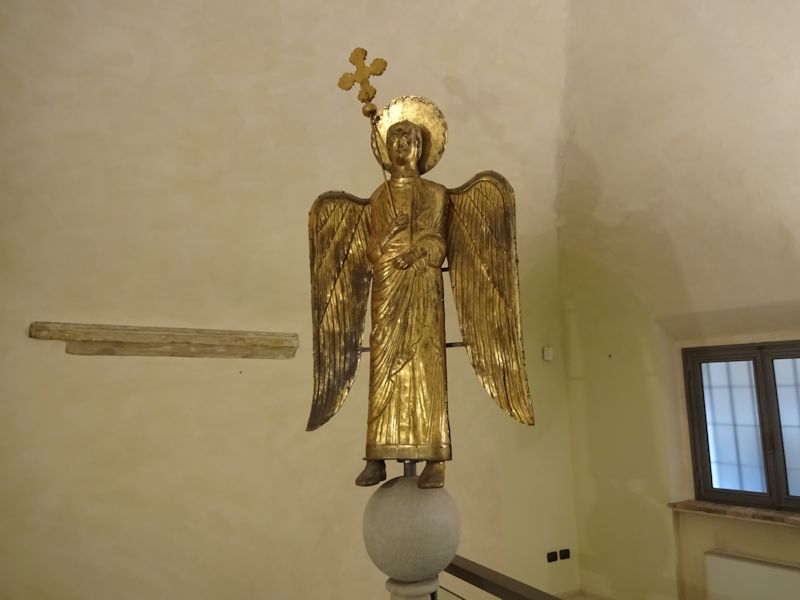
Sure enough, it's filled with fun stuff. This is the original gilded angel, the "Angiol d'Or", that stood atop the Duomo's bell tower, now replaced up there by a golden copper replica.
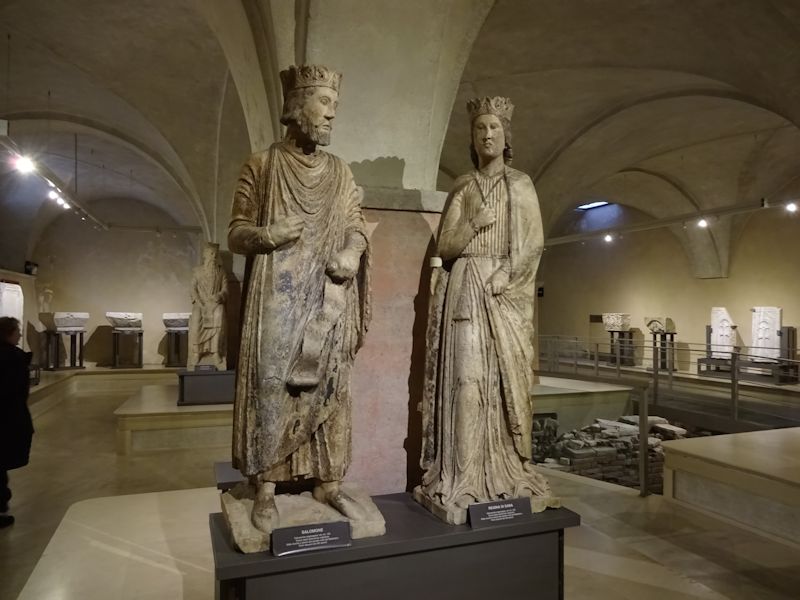
We're in the cellars now, and apparently under part of the Bishop's Palace. A lot of the contents of the small museum come from bits of the Duomo and Baptistery that have been retired for one reason or another, and from excavations right here during renovation work. These folks are King Solomon and the Queen of Sheba (Saba), formerly living in the front door of the Baptistery, both the work of Benedetto Antelami, now missing most of the colorful effect of their 'orientalish' clothing.
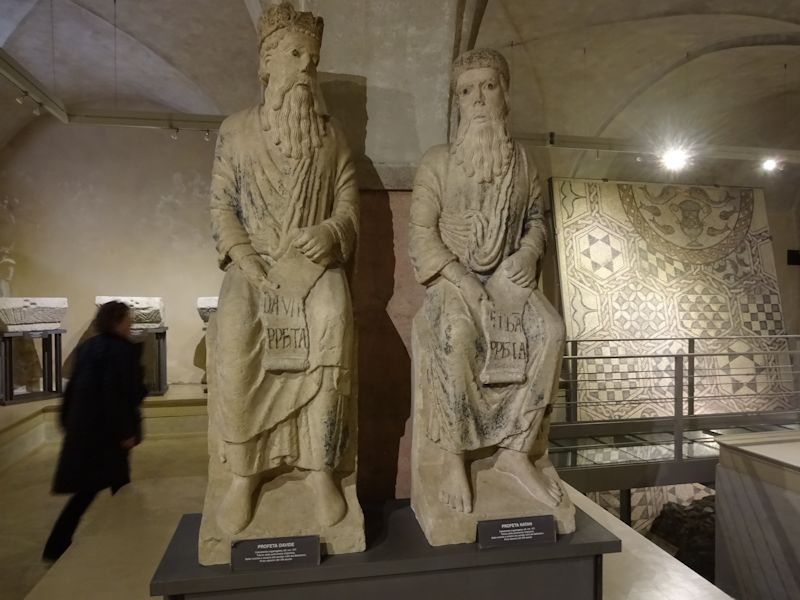
Two more of Antelami's 12th century friends, the scary prophets David and (probably) Nathan, David's own favorite prophet. These, too, come from the northern portal (front door) of the Baptistery.
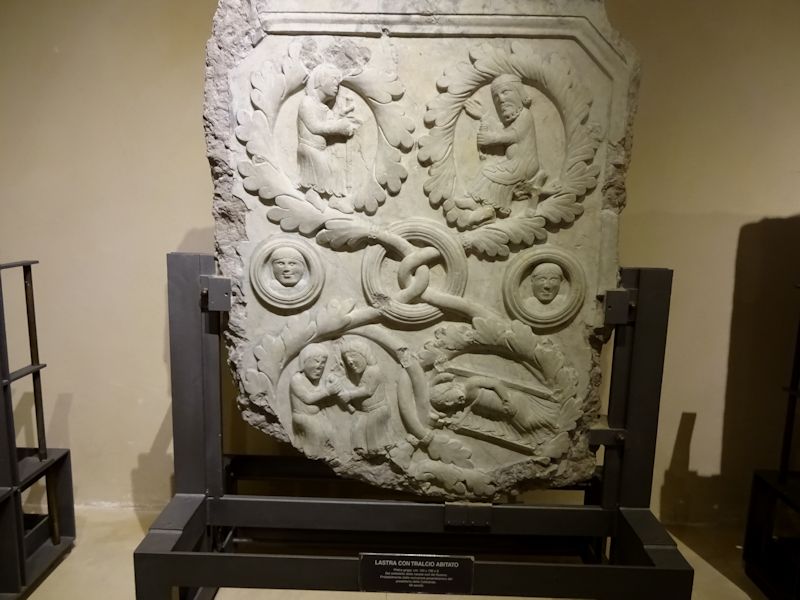
Some of the broken architectural elements evidently come from the precursor Christian basilica that was destroyed in the 10th century.

The museum is laid out around excavated remains of the Roman city, including part of the city walls dating from the late 3rd century AD.
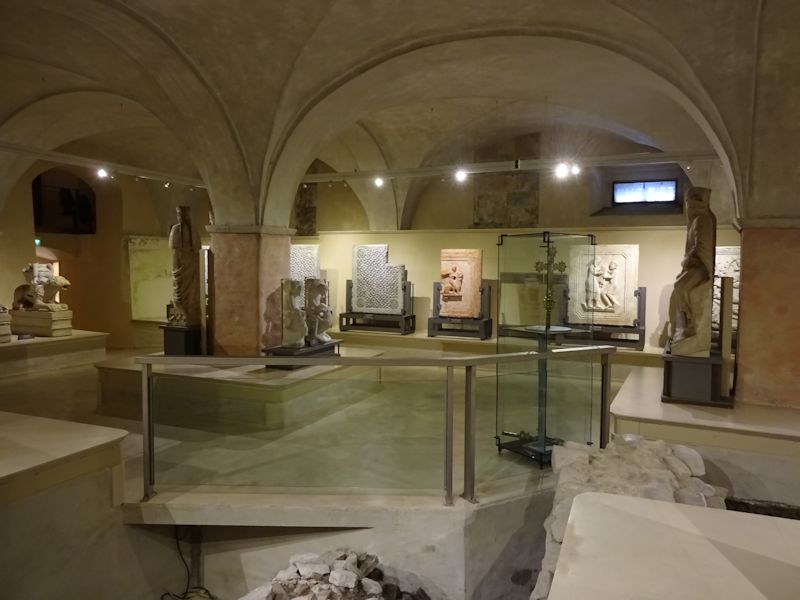
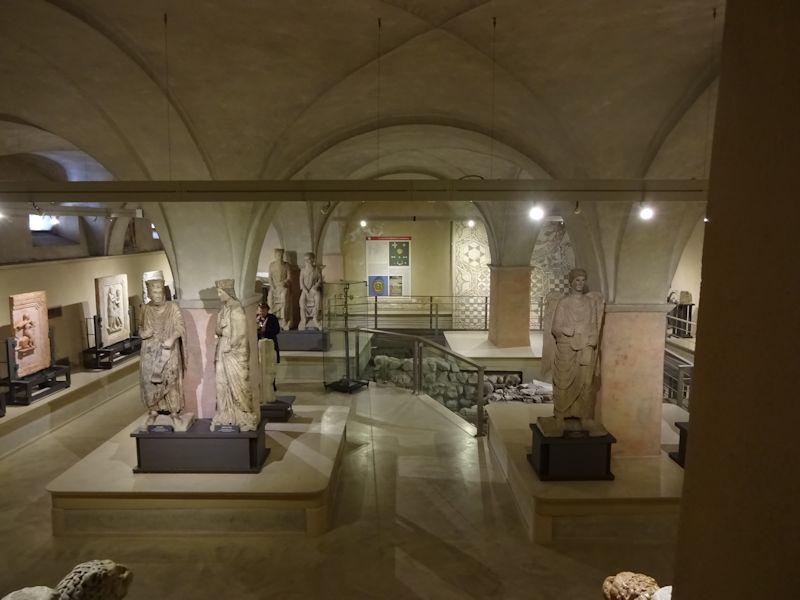
An overview of most of it
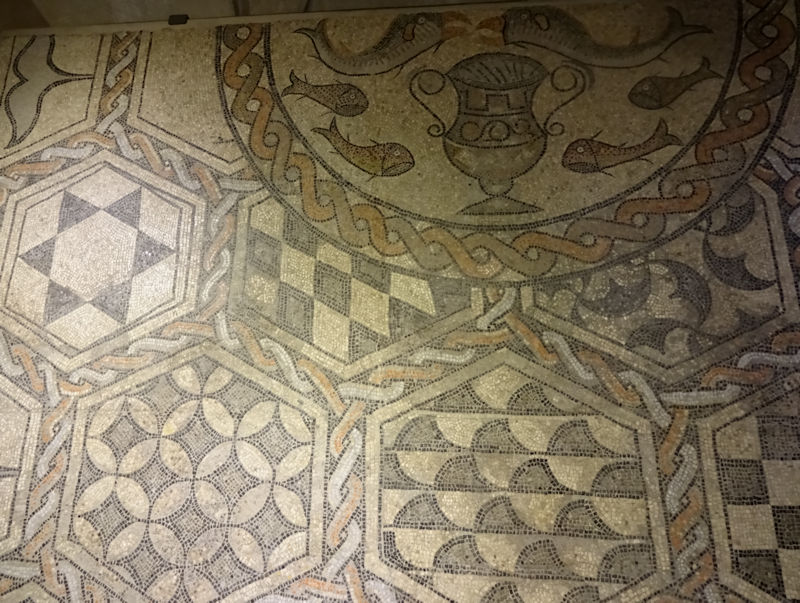
Mosaics from about the 6th century, discovered under what's now the Piazza Duomo, are thought to be from an early Christian basilica. The 'cantharos' or drinking vessel is now the symbol of the museum. (They look awfully unhappy to be true Christian fish, and the cantharos is usually associated with Bacchus.)
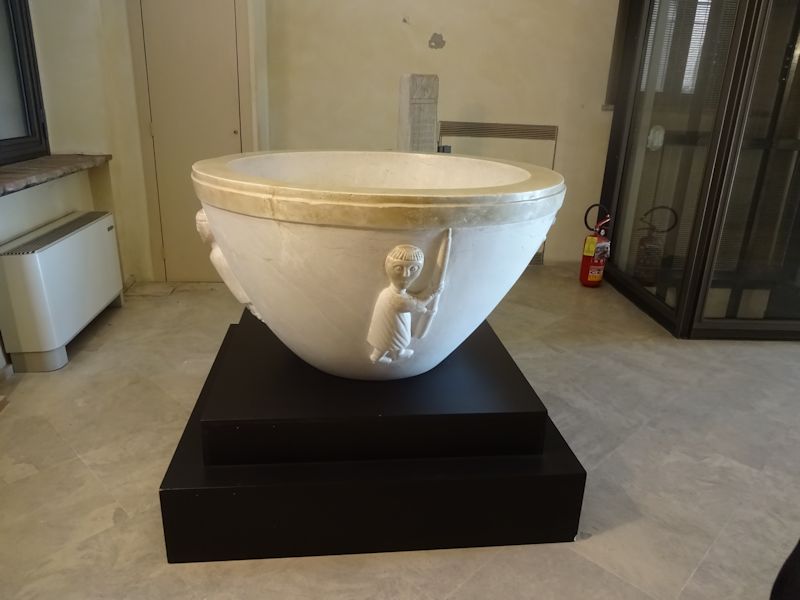
Aww, cute little guy.
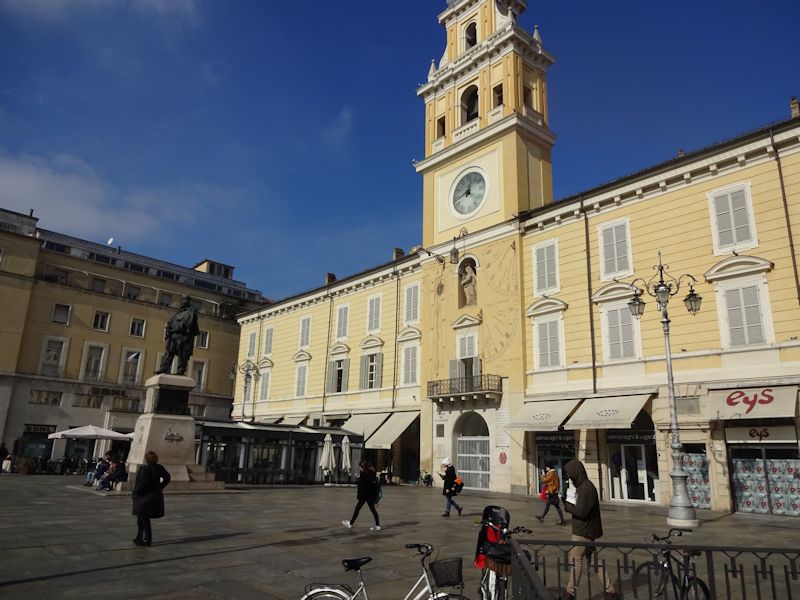
We've just dashed down the street to the Piazza Garibaldi and the Palazzo del Governatore, or Governor's Palace, which was ordered up in 1283 by the Florentine podestà at that time; the baroque tower in the centre dates from 1673. It's now a centre for contemporary art.
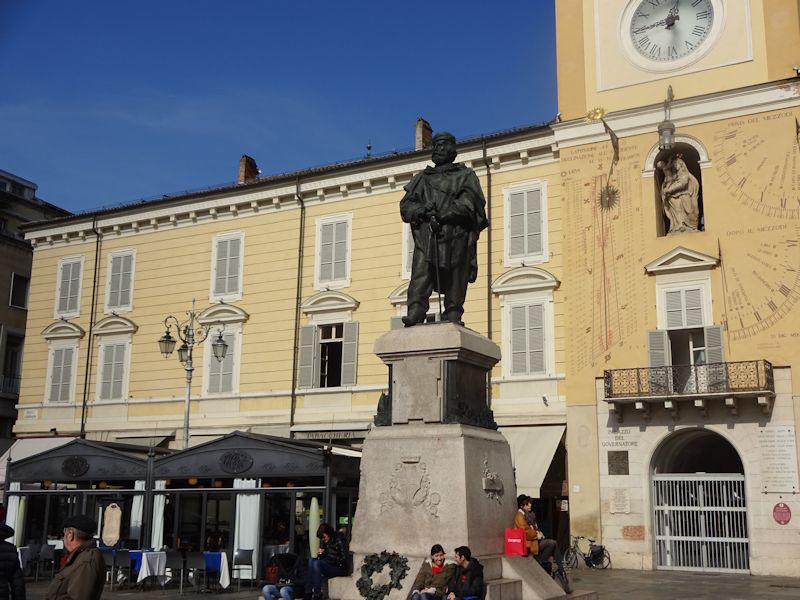
The terracotta Virgin Mary dates from 1762, the bronze Garibaldi by Davide Calandra from 1893.
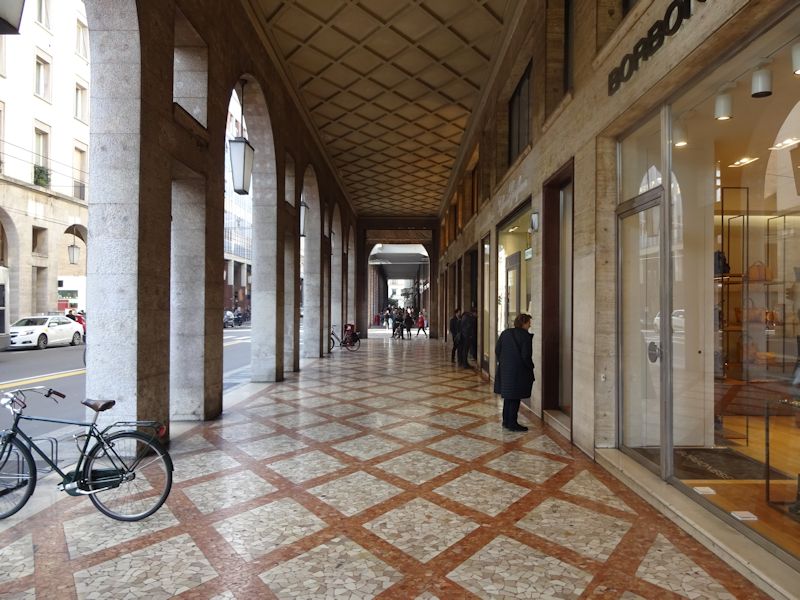
Window-shopping on the Strada Giuseppe Mazzini, the main east-west thoroughfare (under various names) through town

The river Parma, looking northward toward the Ponte Verdi between the Parco Ducale, on the left side, and the Palazzo della Pilotta. We're on the Ponte di Mezzo at the moment, crossing to the Oltretorrente neighborhood on the western side of the river.
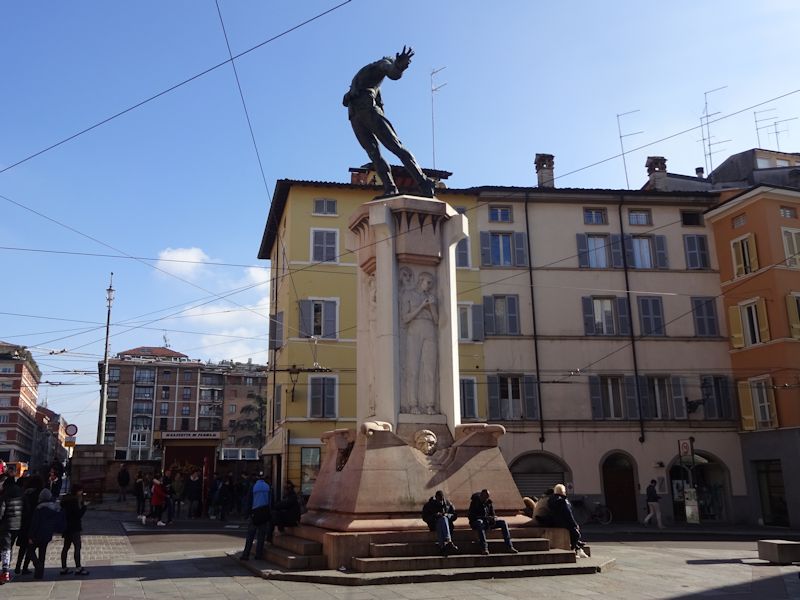
To be greeted by this awful thing. The style looks fascist, the subject looks anti-fascist. Actually, according to the plaque, it's both: Filippo Corridoni was a revolutionary syndicalist whose many activist and propaganda efforts included working with a young Mussolini in various episodes of strikes and labor unrest. He died in 1915 on the Isonzo front in the 'White War', at 28.
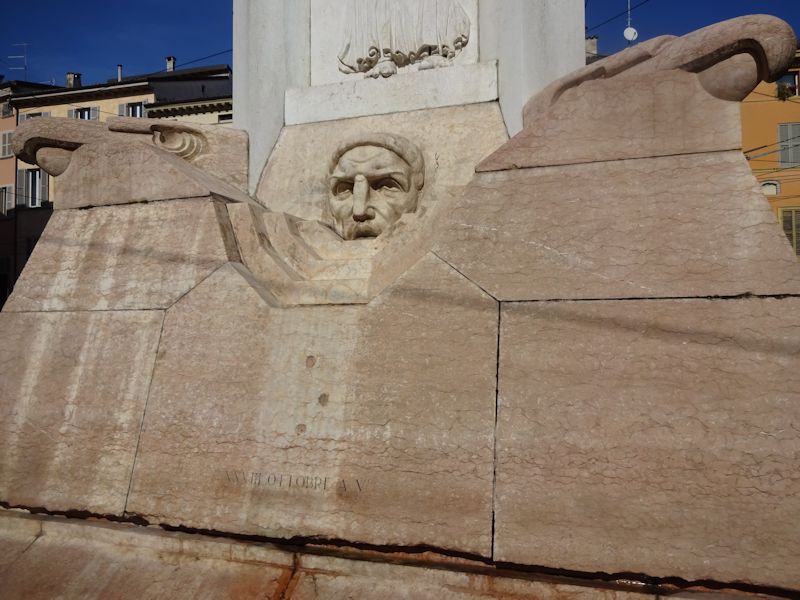
That's certainly got the Mussolini touch.
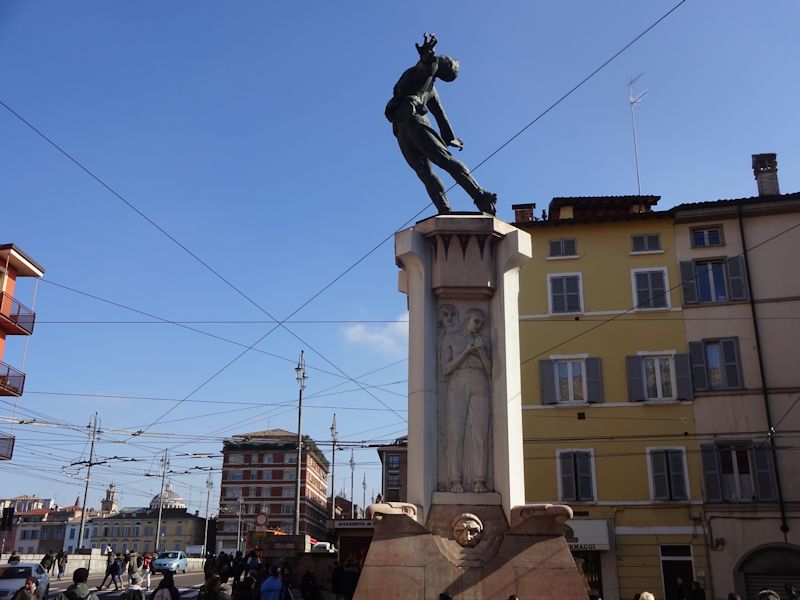
Both Mussolini's fascists and the subsequent socialist trade union movement considered him their own hero, so here he is. He died on the Carso Plateau under Austrian attack and his body was never found, but this gruesome heroic figure probably satisfies both sides. Not many years later, in August 1922, the trade unions and citizens of this neighborhood, the Oltretorrente, formed the "People's Champions" and turned back the Blackshirt fascist squadristi under Mussolini's favorite goon Italo Balbo, considered by some to be the first act of anti-fascist Resistance in Italy.
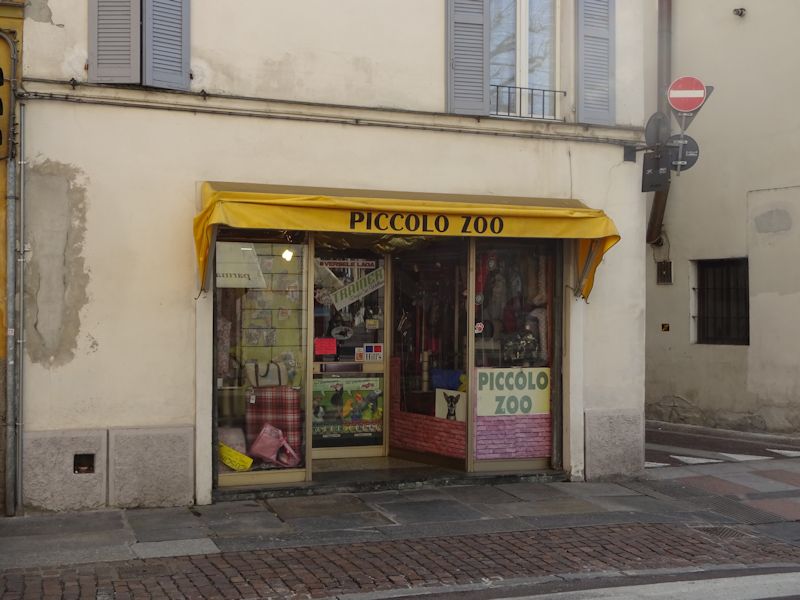
But enough of monuments, and museums and churches. We've found what we came for, on the Strada Nino Bixio -- the catfood store. And just in time.
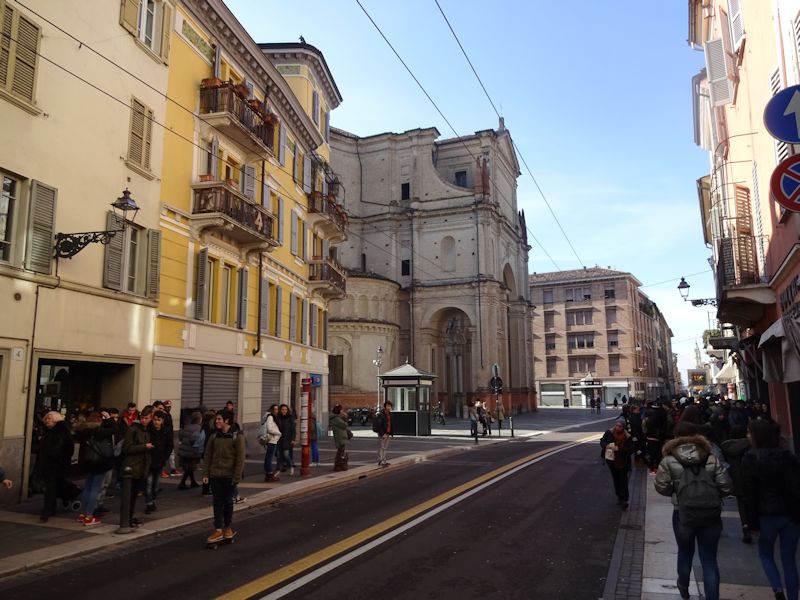
Farther into the neighborhood, that is the church of Santissima Annunziata, begun in 1566 on the orders of Duke Ottavio, which looks uninteresting and just closed for lunchtime anyway -- however, luckily, just behind that horde of schoolkids at the bus stop on the right sidewalk, there is a cosy but crowded pasta and panini bar, which worked out just fine.
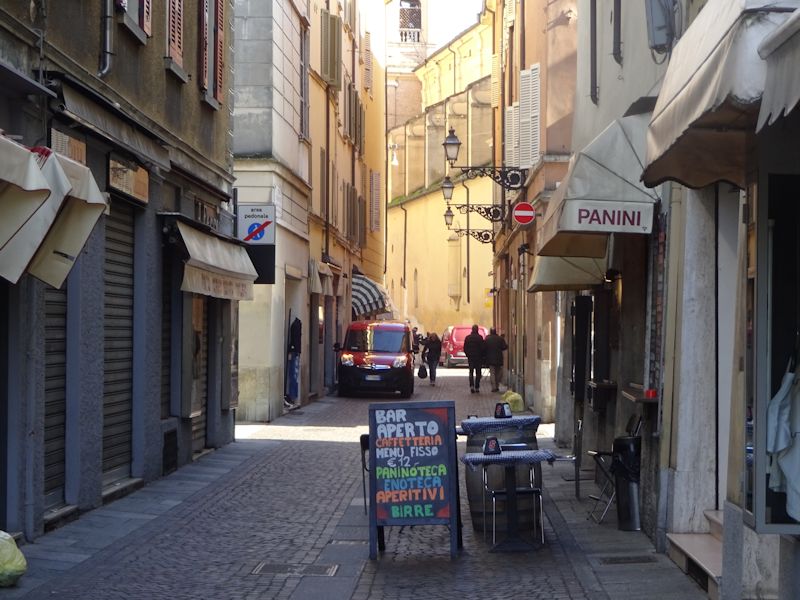
Now we're back on the other side of the river, in the huge below-river-level Piazza Ghiaia along the Lungoparma riverside road. That's the I Du Rezdor sandwicherie along the Via Copelli, with the Church of San Bartolomeo in the background.
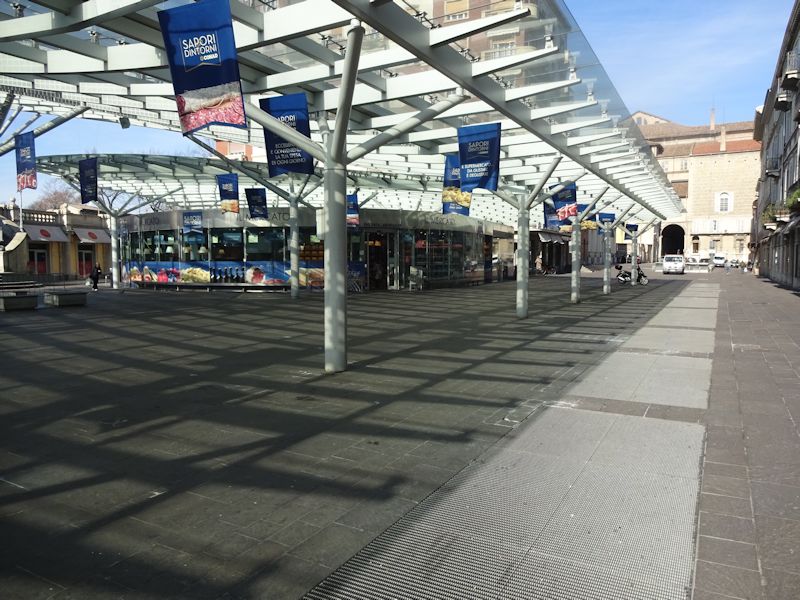
The vast marketplace in the Piazza Ghaia (we'll be back, of course, on market day a few days hence). That store is one of the ubiquitous Conad supermarkets, and we need to buy stuff desperately I'm told.
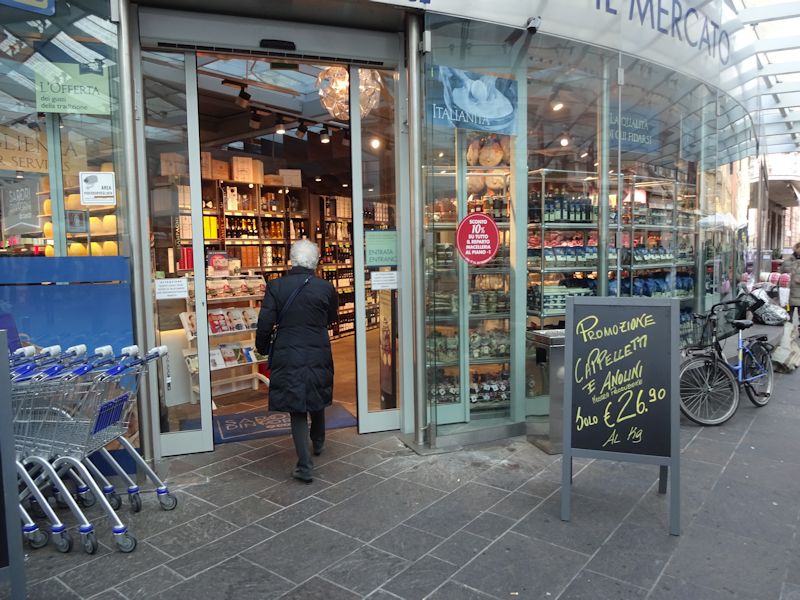
But this is not just any Conad (which, of course, we always refer to as Gonad) -- it's got specialty and gourmet stuff on top, and the supermarket underground.

The subterranean Conad, a joy just to walk around in
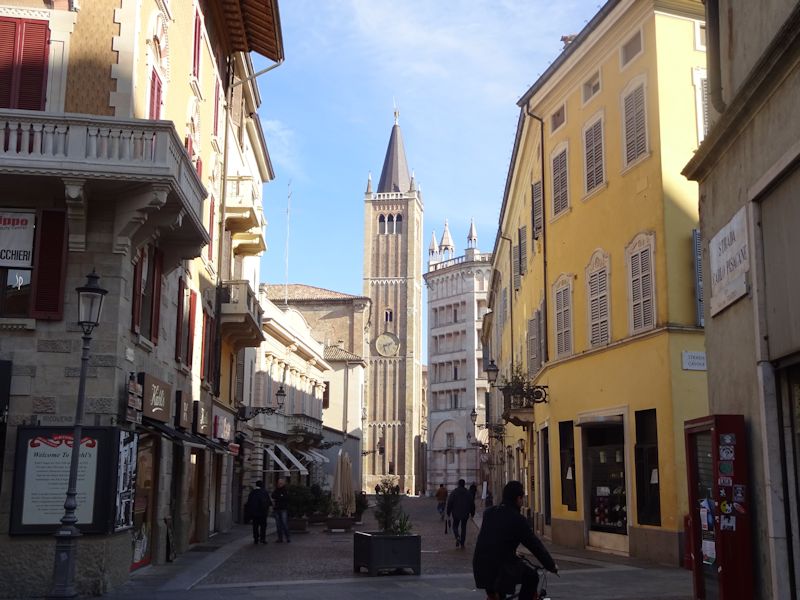
Back to the Piazza Duomo

And then off we go again, as in a Whirlwind . . .
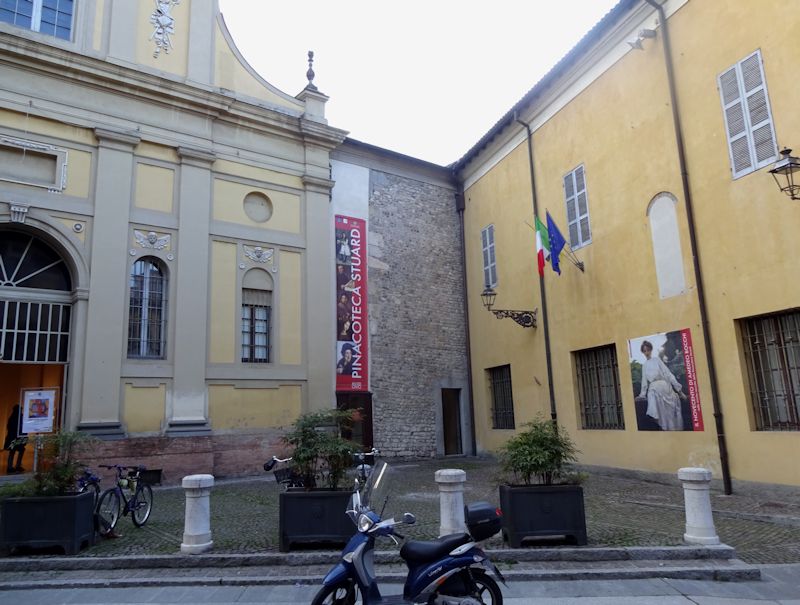
. . . to the Pinacoteca Stuard, in a wing of the 10th century Benedictine monastery at the head of Cavour Street on the Borgo del Parmigianino, restored and opened as a museum in 2002.
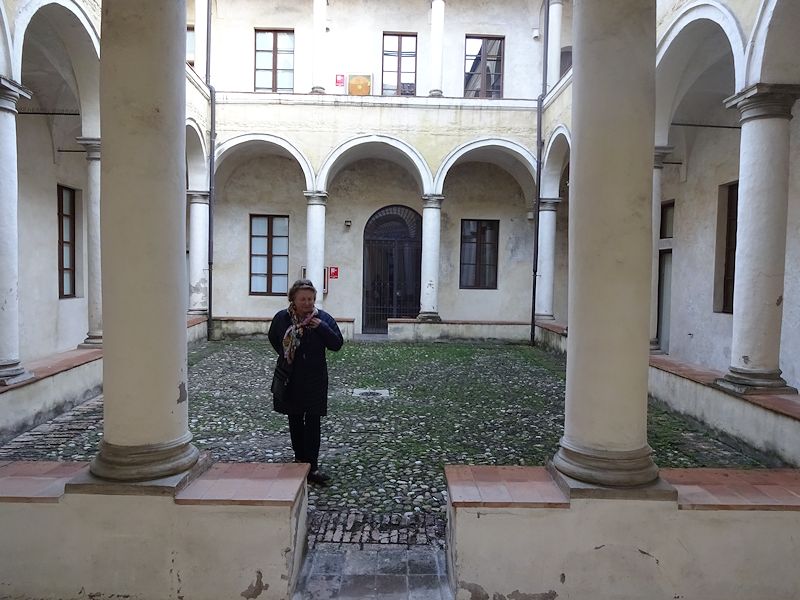
The Stuard Gallery is the most important private collection in town, specializing in a collection of 14th to 19th century pictures left by the will of Giuseppe Stuard in 1834 and now administered by the city.

A microcephalic Christ with an improbably light cross; not an auspicious beginning.
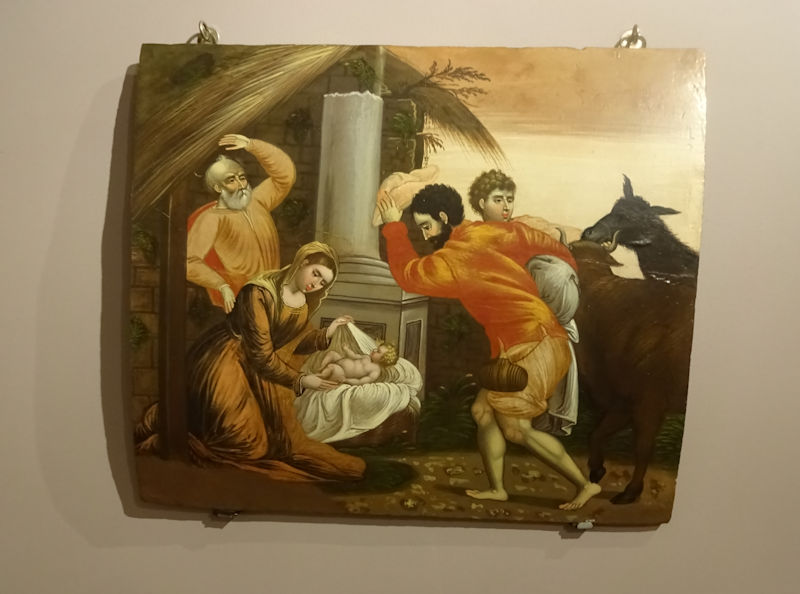
A uncommon take on the adoration of the shepherds, here attributed to the "Maestro della Elle", working in Crete in the second half of the 16th century
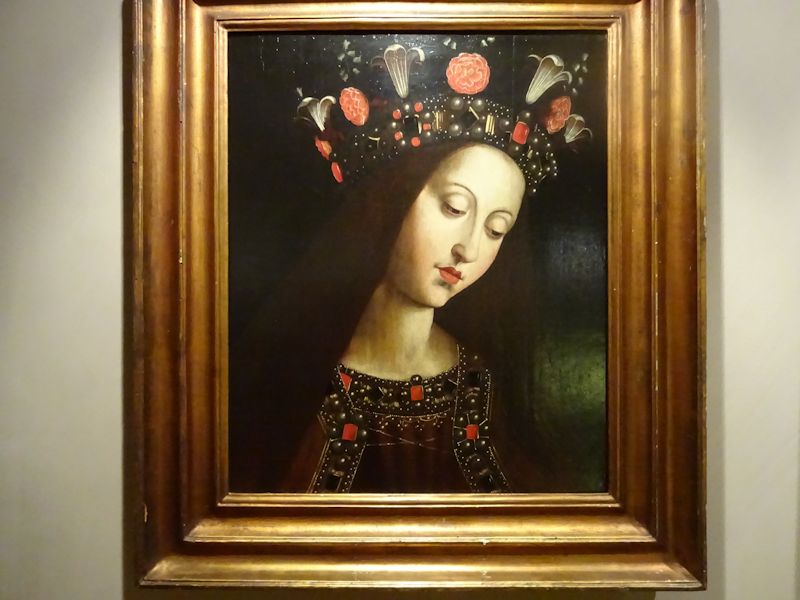
The Crowned Virgin, here described as a copy of an original by Hubert and Jan van Eyck in the early 15th century
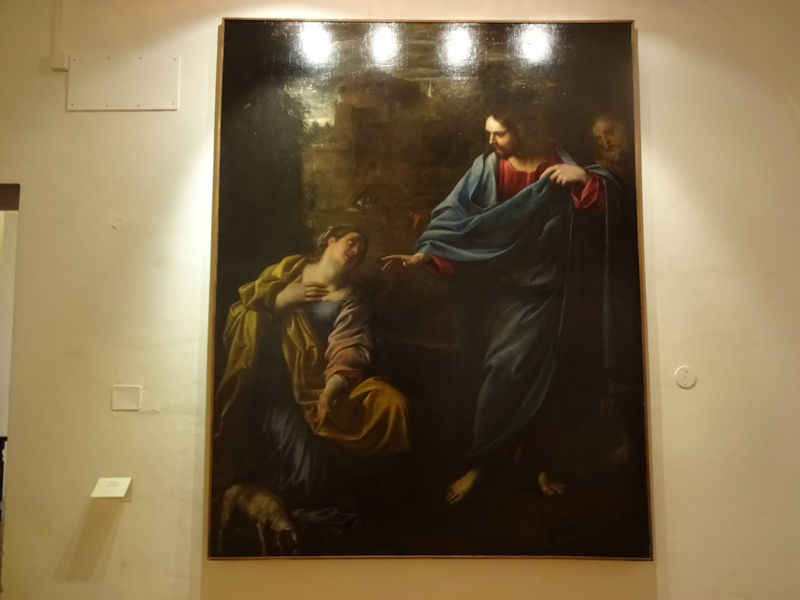
"Christ and the Canaanite woman on an airport runway with an Airbus 318 landing overhead", by Annibale Carracci, which perfectly captures the paradox of taking tourist-photographs in art museums -- the better the museum's lighting for the pictures, the harder it is to get a no-flash photo without the lights in it.

Another worthy 'Judith and Holofernes', this by the wonderful Lavinia Fontana (1552-1614), who's sometimes "regarded as the first woman artist, working within the same sphere as her male counterparts, outside a court or convents".
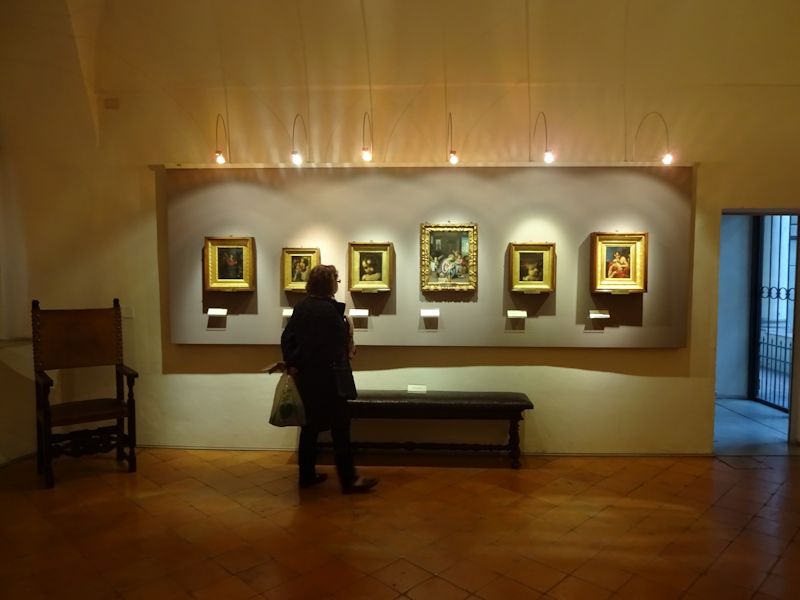
Everything's so nicely lit up.

A cloister within the former Benedictine monastery
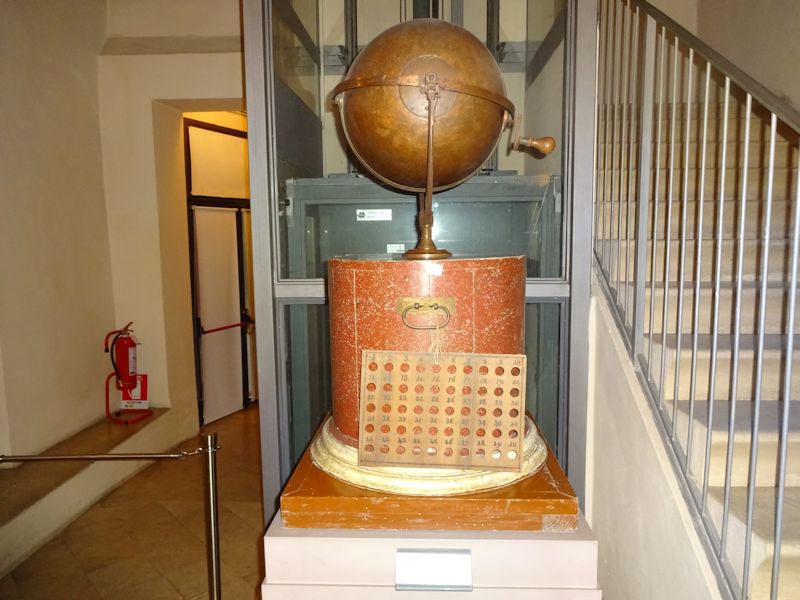
This is, in fact, a Renaissance lottery machine.
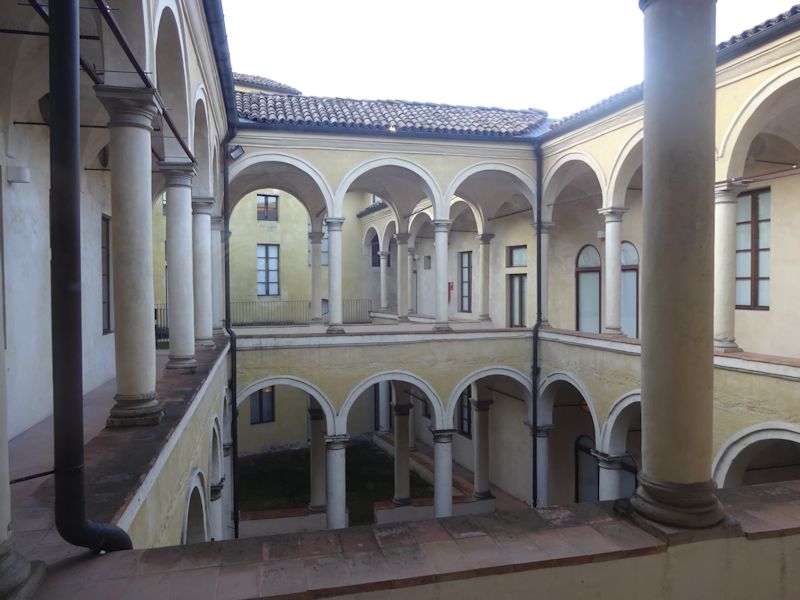
The cloister from above
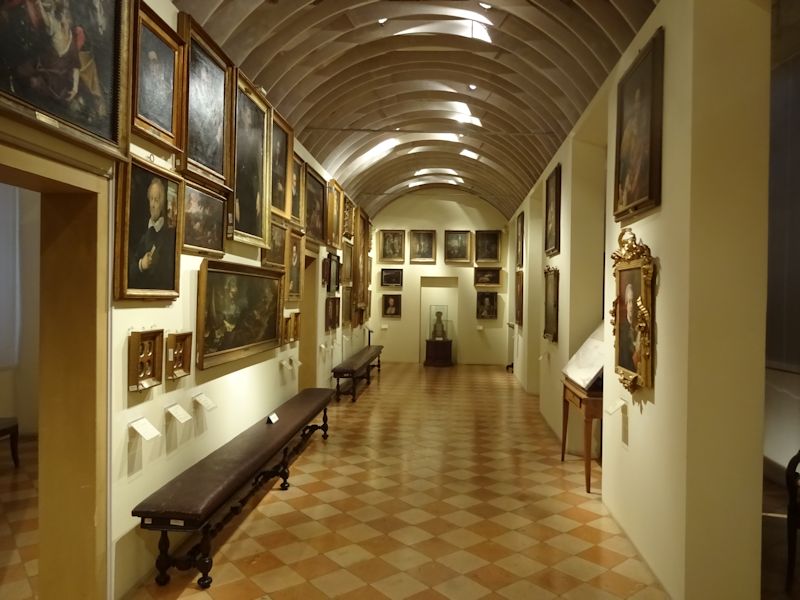
We've got a ways to go yet. We don't want to miss anything.
-- I'll have to write you a cheque. ('L'Elemosina', by Edoardo Bertucci, 1891)
A haunting picture, just near the exit, of 'Gardina Tosi', by Daniele de Strobel of Parma, ca. 1903
Parmigian specialties, confusion in abundance and . . .
. . . Kristin getting some expert advice.
 Dwight Peck's personal website
Dwight Peck's personal website




































